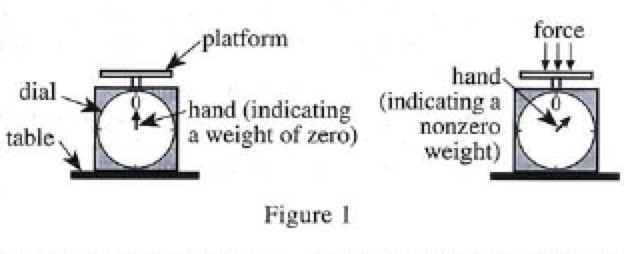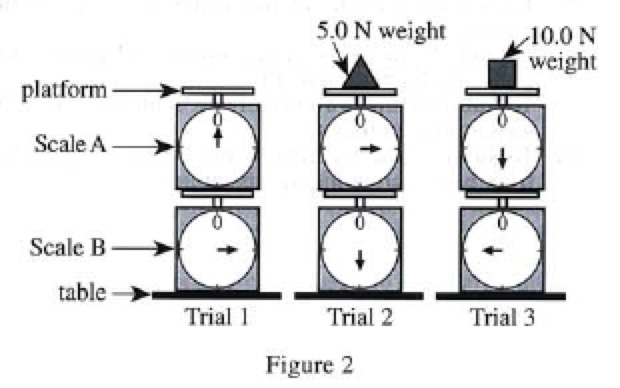Questions 13-19 are based on the following passage.
Students studied forces by using 2 identical platform scales, Scale A and Scale B, one of which is shown in Figure 1. 
The weight of the platform of each scale was insignificant. When a force (such as that produced by a weight) was exerted on the surface of the platform, the hand rotated clockwise away from the zero point on the dial. The amount of rotation was directly proportional to the strength of the force.
Study 1
Prior to each of Trials 1-3, the students set the dial readings of both Scales A and B to zero. In each of these 3 trials, Scale A was stacked on top of Scale B (see Figure 2). In Trial 1, no weight was placed on the platform of Scale A; in Trial 2, a 5.0 newton (N) weight was placed on the platform of Scale A; and in Trial 3, a 10.0 N weight was placed on· the platform of Scale A. The dial readings for the 3 trials are also shown in Figure 2. 
Study 2
The students placed a pencil on the platform of each scale and positioned on top of the pencils a board that spanned the 0.40 m distance between the 2 scales. Prior to each of Trials 4-6, the students set the dial readings of Scales A and B to zero (see Figure 3).
In each of these 3 trials, a 10.0 N weight was placed on the board at various distances from the pencil on Scale B (see Figure 4). In Trial 4, the weight was 0.10 m from the pencil; in Trial 5, the weight was 0.20 m from the pencil; and in Trial 6, the weight was 0.30 m from the pencil. The dial readings for the 3 trials are also shown in Figure 4.